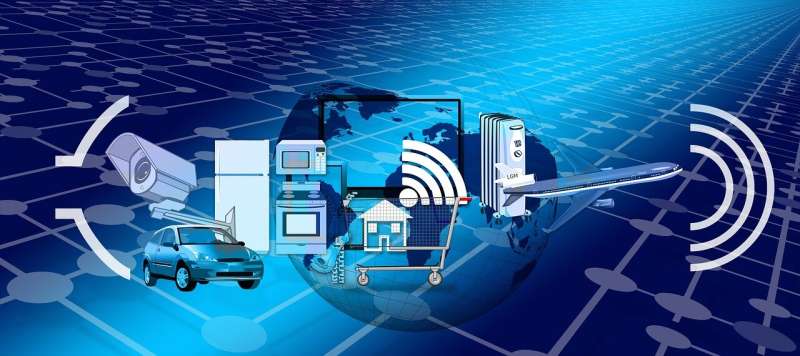The Internet of Things by satellite will become increasingly accessible

For some years now, the Internet of Things (IoT) has been a constantly evolving reality. The possibility that machines (nodes) can communicate with each other has paved the way for applications that promise to have a profound impact on our lives. They include smart farming, home automation and communication between vehicles.
One of the key elements of the IoT is wireless communication between machines, known as Machine-to-Machine (M2M) Communication. Unlike mobile networks such as 4G, or WiFi networks, a significant proportion of M2M communications is characterized by very low transmission speeds, very small data packets and a huge number of devices. These features represent a major challenge in terms of coordinating telecommunications networks.
Recent research presents efficient, low complexity algorithms so that the Internet of Things via satellite is increasingly accessible, thanks to the implementation of advanced random access schemes by satellite. The research is developed in a study published in International Journal of Satellite Communications and Networking, of which one of its authors is Giuseppe Cocco, a researcher at the Department of Information and Communication Technologies (DTIC) and at the German Aerospace Center (DLR), along with researchers from the European Space Agency.
The number of sensors connected to the same satellite can be extremely high
Let us suppose that a crop has a moisture sensor connected to a satellite that transmits information only when the humidity falls below a certain threshold. The sensor might not send any information for a long time and when it does decide to do so, the amount of data is very small (just a few bits). In this case, the volume of control data needed to establish a connection with the satellite network may exceed the amount of useful data (payload) transmitted by the sensor.
Although this may not seem like a problem if dealing with a single sensor, in the case of satellite networks the number of sensors connected to a single satellite can be extremely high. Even though each sensor transmits a small amount of data very occasionally, the total volume of traffic can be very large. In addition, removing or reducing control information in M2M traffic could lead to signals from different sensors interfering with each other, which could cause a loss of sent information and, in the event of heavy traffic, even to a network collapse.
In this context it is understood how M2M traffic control information is a significant but necessary waste of resources to avoid interference, which can lead to the need to use a broader bandwidth, bigger and more expensive satellites or more of them, a higher cost of M2M communication and a negative impact on the development of the IoT.
To solve this problem, in recent years new advanced systems of multiple random access have been developed that allow greatly limiting control information without affecting the performance of the network. These systems work so counterintuitively, that is, instead of trying to avoid interference, they increase it, leaving each node to transmit multiple copies of the same message without knowing if anyone else is transmitting at the same time.
"The trick is in how the receiver exploits this interference to clean the received signal, extracting useful information from it," explains Cocco. "To get an idea of how these systems work, you can think about how you eat an artichoke: every time you remove a leaf you eat the good bit of it, but the leaves that are below are also released, so there is at least one new leaf that can be removed every time," adds the co-author of the article.
Several articles in international scientific journals have confirmed that random multiple access based on the transmission of multiple copies of each message is very promising. However, these studies use simplifications (needed to work more simply with equations and simulations) that do not allow assessing the performance of these systems in a real environment, the authors of the study explain.
"Our contribution goes beyond these simplifications. We have studied the impact on the entire system of various elements present in real systems (such as imperfections in low cost electronics that are typical of many IoT nodes) and have developed algorithms that help strengthen the system against them. Thus, we have made a particular effort to develop algorithms that are at the same time efficient and of low complexity, so that IoT via satellite is increasingly efficient and accessible for everyone," concludes Cocco.
More information: Marco Krondorf et al, Towards the implementation of advanced random access schemes for satellite IoT, International Journal of Satellite Communications and Networking (2019). DOI: 10.1002/sat.1331




















